Once Upon a Time in China and America (1997)
Directed by: Lau Kar-Wing, Sammo Hung
Written by: Philip Kwok, Sharon Hui, So man Sing, Sze Mei Yee, Szeto Chek Hon
Starring: Jet Li, Kwok-Pong Chan, Rosamund Kwan, Xin Xin Xiong
AKA WONG FEI HUNG 4: SAI WIK HUNG SEE
China/Hong Kong
AVAILABLE ON BLU-RAY: NOW, in EUREKA ENTERTAINMENT’S ‘ONCE UPON A TIME IN CHINA’ BOXSET
RUNNING TIME: 100 mins
REVIEWED BY: Dr Lenera, Official HCF Critic
Wong Fei-hung, Clubfoot and Yee go to America to visit Bucktooth So, who’s opened a Po-chi-lam clinic there. When their carriage is ambushed by Native Americans, Clubfoot and Yee are rescued and taken to the clinic, but Wong hits his head on a rock and loses his memory before being found by another, friendlier Native American tribe. Back in town, the Chinese immigrants are treated poorly by most of the whites including the mayor. And then there’s a gang of bank robbers on their way…
I wander if Eureka only decided very late in the day to include Once Upon A Time In China and America in their Once Upon A Time In China boxset, as from what I can tell it doesn’t have its own case and poster design like the first three, which is why I’ve used a non-Eureka poster for it, nor has it had a total restoration. Or maybe they’re slightly ashamed of it? It’s actually the sixth and last film in the series. After Jet Li and Tsui Hark fell out with each other during the production of Once Upon a Time in China 3, Li left and was replaced by Vincent Kwok in the role, while Hark only produced the fourth film though came back to direct the fifth. Li accepted the offer to return for part six, directed mostly [not not entirely] by Sammo Hung. Considering that none of it actually takes place in China, they’d have probably called it Once Upon A Time In America if that title hadn’t already been used. Hung possibly stole the idea from Jackie Chan who wanted to make something called Western Story around the same time, though of course he did eventually go on to make the very similar Shanghai Noon, while his Who Am I? was clearly influenced by this film. Is it as silly as it may seem from the synopsis of the first third? The answer is yes, but that’s not to mean that it isn’t enjoyable. Hung just set out to make a goofy romp full of western stereotypes, combining gun fighting, martial arts, amnesia, Native Americans, bank robbers, a corrupt Sheriff, and anything else our five screenwriters Sze-to Cheuk-ho, Shut Mei-ye, Sharon Hui, Philip Kwok and So Man-sing can think of to cram in – and it does sometimes seem that they were working independently as little of it hangs together. There’s also some seriously bad acting, but as this wasn’t a film intended to be taken seriously this can actually add to the amusement.
A cowboy galloping in front on Monument Valley is the opening shot, immediately setting out how different this film will be, though the title music does switch to another different version of the Wong Fei-Hung theme, this time with no vocals, a banjo, and a more tribal-style drum beat. The cowboy is Billy, and if you find Jeff Wolfe’s acting in the part painful to watch then you may not be in the right frame of mind to watch this film, as there’s worse to come. Anyway, Billy nearly collapses due to exhaustion but is rescued by Wong, Yee and Clubfoot’s carriage, Wong leaping over the drivers and the horses to stop it. They reach a wagon train parked, and it’s lovely to see Wong present Yee with her engagement ring, though their relationship then takes a back seat for most of the time because the two become separated when some Native Americans attack. The build-up to this is nicely done with good inter-cutting of close-ups, including two of a cowboy’s neck which are led to believe will receive an arrow in it – though that doesn’t actually happen. Wong gets to cut loose with his umbrella again in the resulting melee, though he knocks himself out and wakes up not remembering a thing – not that this stops him from fighting to defend the tribe that finds him against their rivals, nor even getting himself a Native American girlfriend to whom he even gives his engagement ring. Considering that virtually none of the Native Americans look Native American and the two most prominent ones speak English, little of this is remotely convincing, but I’m not sure that it matters too much.
As for the Chinese in the area, they’re treated as second class citizens by the whites. The only white people friendly to the Chinese are a couple of whores and Billy, whose gunfighting skills come in handy – though how much help can that be if even the law is crooked? The un-named Mayor is in debt, and decides to hire some bandits to help him rob a bank so that he can flee from the town with a load of cash and maybe frame the Chinese while he’s at it. The guy playing the Mayor is quite simply atrocious but his pained performing makes his appearances a hilarious highlight in a way. More intentionally funny when Yee asks Wong to test glue to see if it’s sticky, and Wong eats it thinking that it’s food, though the best comic scene has to be when Clubfoot tries to get Wong to remember who he is by pretending to be and fighting him in the styles of villains from the previous films. It’s good that Clubfoot has replaced Leung Foon as Wong’s chief aide in this one, because he’s a much more interesting character, and Xin Xin Xiong gets plenty of chances to show off Clubfoot’s manic fighting style including some incredible footwork. Rosamund Kwan gets to join in the action a bit more too. As for Li, the obligatory bar brawl is another excuse for him to show his stuff, but the final duel set in the same location is disappointing. The film introduces this long-haired villain dressed in black defecating in the woods and kicking a wolf into the air before slicing off one of its legs. How hard is this guy? Well, he may be hard but as it turns out he’s actually not very impressive a fighter, Wong having the upper hand all throughout their showdown.
Familiar western situations are mimicked or parodied throughout, sometimes to amusing effect though the film rather wastes familiar Hong Kong comedic face Richard Ng whose part is little more than that of a cameo. While we’re asked to consider the treatment of immigrants and feel rightly angry when we see the Chinese bullied and even attacked, the political element, so important before, is drastically muted, though it would probably have been out of place in this particular film anyway. At least Wong is still fighting for his countrymen against their oppressors. Li, who’d already shown his comic chops in the two Fong Sai-Yuck films, again shows a knack for humour here and also evokes Wong’s confusion quite well, but the character of Wong isn’t allowed to actually develop this time round – well, except for telling what seems to be a lie in the final scene. Yes, a lie! It’s a little surprising, but most viewers would probably agree that he had a justifiable reason to do this, and it’s a nicely cheeky farewell to the character in this particular series.
In addition to directing, Hung also did the fight choreography, and his style of action is a little different from Hark and the choreographers he used. While the amount of wire work is about the same as in Once Upon A Time In China 2, Hung uses more close-ups and faster editing, though he doesn’t go overboard and turn the action into an eye-hurting blur like far too many filmmakers do these days. He also attempts to show power a bit more, though not quite so much as in some of his earlier work, and repeats Hark’s liking for slow motion. Hung, who I feel has always been rather under-appraised as a filmmaker even if this is one of his lesser efforts, also attempts to show Wong’s confused state of mind at times, like a rather startling little montage where his friends appear as Native Americans before he’s killed by a spear. There’s a bit more bloody violence than film number two, if all very quick like a throat slitting by a spur. This film had three cinematographers Walter Gregg, Lan Fai-tai and Koo Kwok-wah, which may explain how some lovely outdoor photography of sunsets, sunlight streaming in through trees, and the like, alternates with bland looking on-set stuff. This film was shot at the Alamo Village, the movie set originally created for the original The Alamo, but elsewhere looks far cheaper than the other three films. Lowell Lo’s score often tends to add little but mild background annoyance, and you even get the Wong Fei-Hung theme playing during scenes where Wong isn’t present.
It’s all a far cry from the epic grandeur, spectacle and intelligence of Once Upon A Time In China and Once Upon A Time In China 2, and I imagine some fans of all first three films getting irritated by the tomfoolery in Once Upon A Time In China and America, but if looked at more as a spin-off than a proper sequel, with tongue rather in its cheek, then it’s not a bad effort really. Hung was maybe wise in realising the futility of trying to match what Hark had done so he didn’t even try and instead attempted to take the series in another direction. Eureka shouldn’t need to be ashamed of including it, but it’s very good that they’ve done so anyway.
Rating: 









Though not a full restoration, the HD transfer of Once Upon A Time In China and America is more than adequate. Detail, sharpness and grain is of a decent level. This time around, on the Mandarin language version you can actually hear the real voices of Li and others rather than anonymous dubbers because it was recorded in synch-sound, amazingly quite a new thing in Hong Kong cinema at the time, where for decades cinema goers had never heard the real voices of most of the stars. It’s quieter than the Cantonese dub, while the English dub doesn’t seem to affect this film that much because of its silly nature. In fact, having everyone speak English rather than just some almost helps it.
The making of is, if quite short, a very good watch. Many prominent cast and crew members, most of them shivering in the cold, talk about the film, with Hung and Kwan [I have no complaints about that] given the greatest prominence while we see a few scenes getting shot. It ends with Hung celebrating his birthday and people wishing viewers a Happy New Year, which is a nice end to the special features in this set, unless you count the two trailers.
The films may go downhill, but that’s often the case. I would rate none of them as below average, and the first two are classics of the martial arts genre which manage to often transcend it. Eureka’s Once Upon A Time In China boxset, apparently put together with little time, is an essential purchase and therefore Highly Recommended.
SPECIAL FEATURES
*The making of Once Upon A Time In China and America [25 mins]
*Trailers

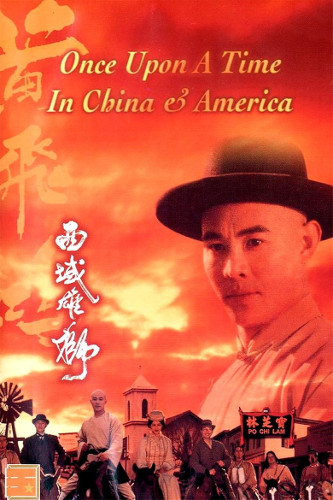
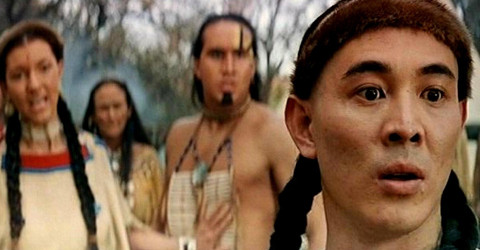


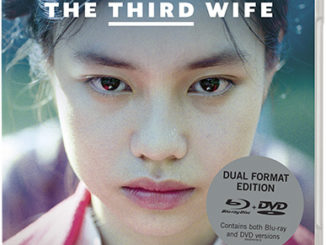
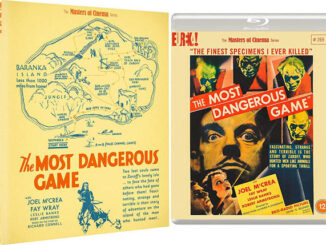
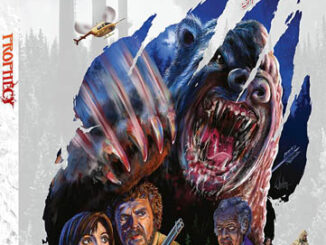
Be the first to comment